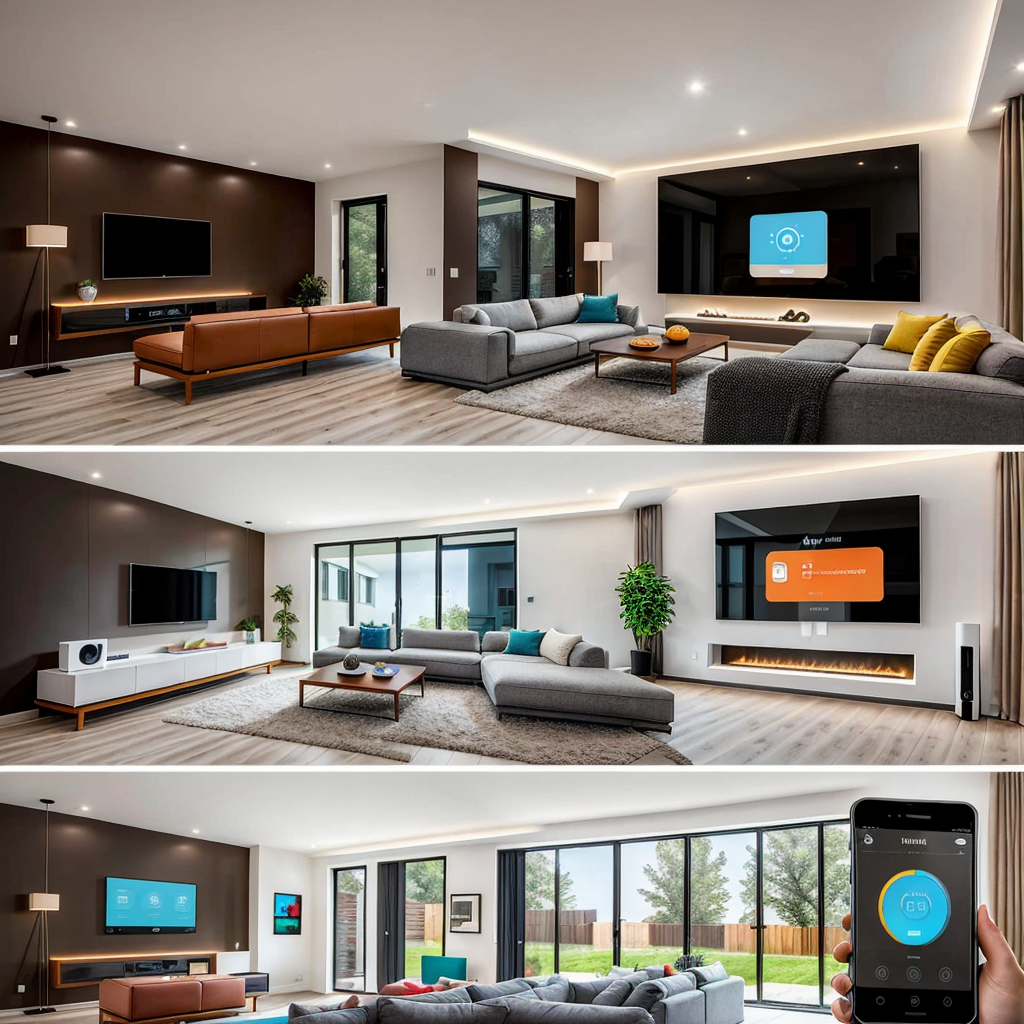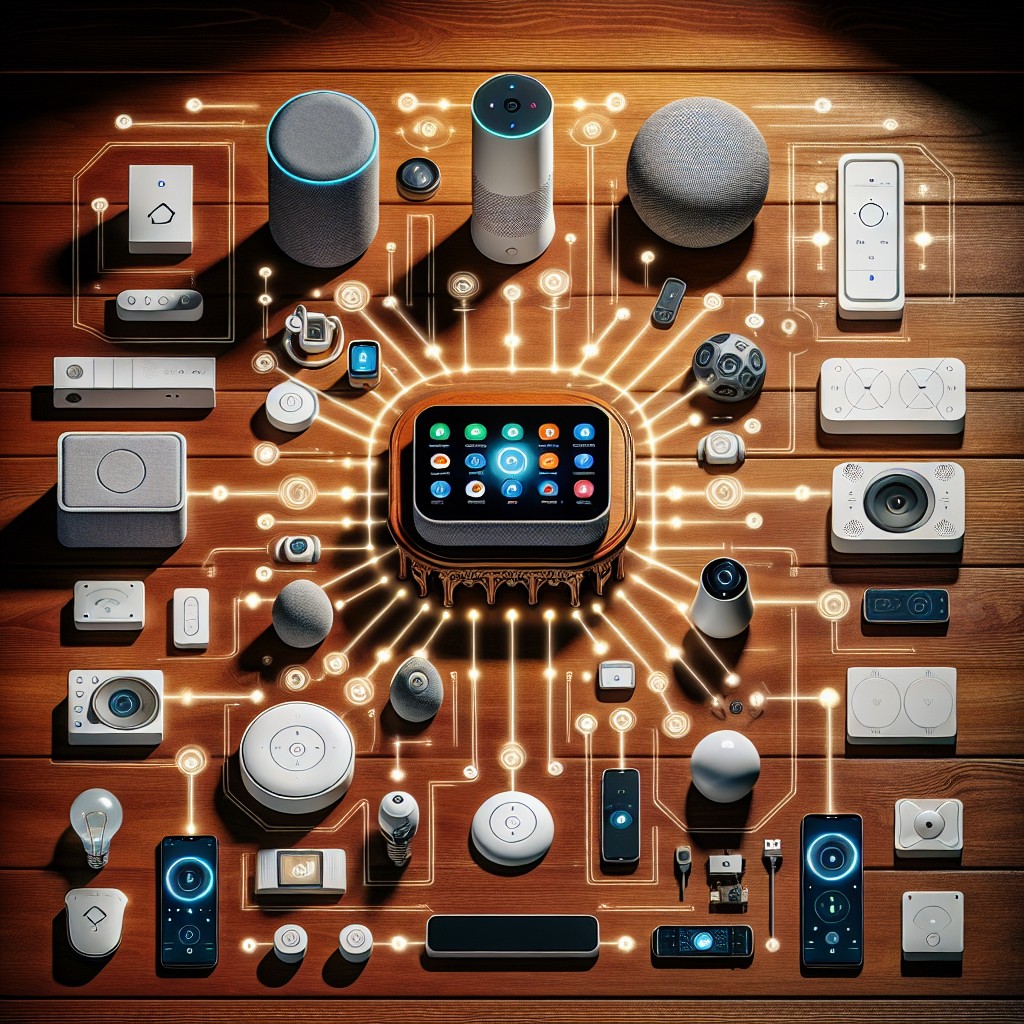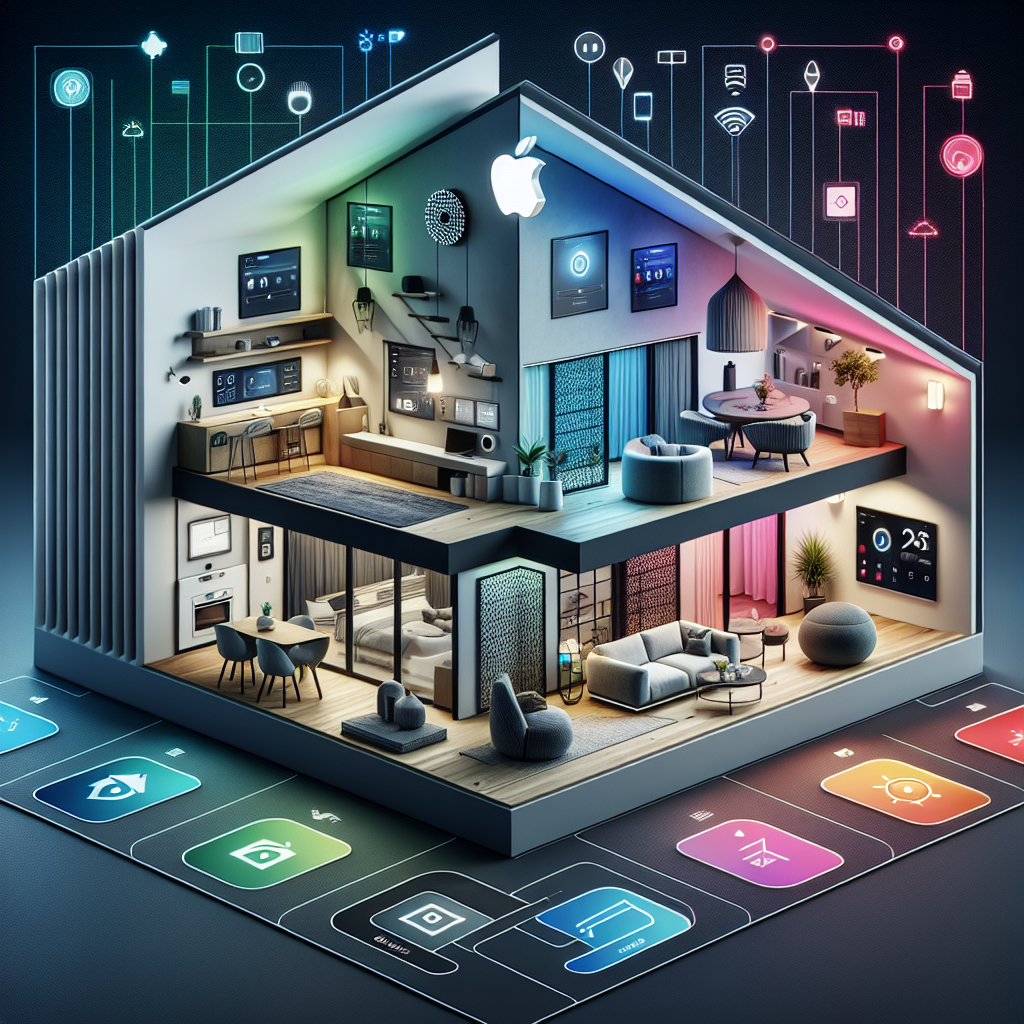Table of Content
- Discover the Latest Home Automation Solutions Tailored for Indian Homes
- Key Trends Driving the Home Automation Market in India
- Practical Step-by-Step Guide to Setting Up Your Home Automation System
- Top Indian Home Automation Brands and Innovative Products to Know
- Answering Common Questions About Home Automation in India
- Resources
Connect with us
Home Automation India: Smart Solutions, Trends, Setup, and Top Brands for Your Connected Lifestyle
🏠 Discover the Latest Home Automation Solutions Tailored for Indian Homes
Home automation is revolutionizing how Indian homeowners and businesses manage daily activities, offering smarter, more efficient solutions that enhance convenience, security, comfort, and energy savings. The latest smart devices and technologies designed specifically for Indian conditions focus on lighting control, security systems, climate management, and energy efficiency—all customized to address India’s unique power infrastructure and lifestyle needs.
Smart Lighting Systems
Smart lighting tailored for Indian homes enables automation and remote control of indoor and outdoor lighting. Featuring Wi-Fi and Bluetooth-enabled bulbs, these systems allow users to adjust brightness, colors, and schedules via mobile apps or voice commands. Besides elevating convenience, smart lighting helps reduce electricity consumption—an important factor considering India’s energy costs and grid variability.
Advanced Security Systems
Security remains a prime concern for Indian residences and commercial properties. Modern home automation incorporates smart CCTV cameras with night vision and motion detection, smart locks, and video doorbells providing real-time surveillance accessible through smartphones. Many products include cloud storage and AI-powered anomaly detection for enhanced safety without the complexity and expense of conventional security setups.
Climate Control Technologies
With India’s diverse climatic zones, smart thermostats and air conditioners are increasingly popular. These devices automatically adjust room temperature based on user preferences and environmental data, optimizing comfort and reducing energy usage. Some smart AC controllers can retrofit existing air conditioners, making smart climate control an affordable upgrade for many households.
Other Noteworthy Solutions
- Smart Plugs and Switches: Facilitate remote appliance control and power consumption monitoring.
- Voice Assistants: Devices like Amazon Alexa and Google Assistant support multiple Indian languages, enabling intuitive voice control integrated with local smart products.
- Water Management Systems: Smart irrigation controllers and leak detectors help conserve water, addressing challenges in India’s water supply.
These products are designed to operate efficiently with Indian power standards, accommodate network variability, and reflect regional user preferences, ensuring a seamless home automation experience.
LiveMint – Home Automation
📈 Key Trends Driving the Home Automation Market in India
The home automation landscape in India is evolving rapidly, influenced by multiple dynamic trends that shape consumer expectations and technological advancements. Understanding these trends empowers homeowners and businesses to make informed technology investments aligned with future developments.
AI Integration Enhances Personalization
Artificial Intelligence (AI) increasingly powers smart home devices, enabling systems to learn user habits and automate routine functions. AI-enabled security cameras can distinguish familiar faces, while smart thermostats dynamically predict preferred temperature settings, elevating both convenience and energy efficiency.
Advancements in IoT Connectivity
The Internet of Things (IoT) ecosystem in India is expanding, with growing interconnectivity across devices. Enhanced IoT protocols and affordable sensors allow seamless interoperability between diverse brands, fostering scalable and robust home networks.
Energy-Efficient Smart Appliances
Driven by rising energy costs and sustainability goals, energy-efficient smart appliances with real-time monitoring and adaptive power management are gaining popularity. These solutions enable Indian households to lower utility bills and reduce their carbon footprint.
Localized Solutions and Language Support
Manufacturers now prioritize regional language options and culturally relevant features, making home automation accessible and user-friendly for India’s linguistically diverse population.
Growing Demand for Security and Remote Monitoring
Increasing urbanization and the prevalence of dual-income families drive the need for reliable remote monitoring solutions. Products like smart locks and app-integrated alert systems are among India’s fastest-growing categories.
Collectively, these trends underscore an Indian home automation market uniquely adapted to local realities while embracing cutting-edge technology.
Hindustan Times Tech
🛠 Practical Step-by-Step Guide to Setting Up Your Home Automation System
Setting up a home automation system in India can be straightforward by following these practical steps designed for optimal compatibility in Indian homes and offices.
- Assess Your Needs: Define which areas to automate—lighting, security, climate control, or a comprehensive system. Consider your budget, and factor in common local challenges such as intermittent power supply or internet speeds.
- Choose Compatible Devices: Select products designed for India’s electrical standards (220–240V, 50Hz). Seek devices that support Hindi or other regional languages to simplify operation. Verify compatibility with your existing network protocols, whether Wi-Fi, Zigbee, or Z-Wave.
- Start with a Hub or Gateway: Installing a central smart hub helps unify device control. Popular compatible hubs include Amazon Echo and Google Nest, which support Indian language interfaces and regional product ecosystems.
- Install Devices Strategically: Follow manufacturer guidelines carefully—mount security cameras at elevated points; wherever possible, swap traditional bulbs or switches with smart versions without rewiring to retain ease and flexibility.
- Set Up Mobile Apps and Accounts: Download and configure the apps corresponding to your devices. Link all products in one ecosystem, customize schedules, alerts, and automation rules to fit your daily routines.
- Test Thoroughly: Verify device connectivity and responsiveness under various conditions, including during power or internet fluctuations common across Indian regions. Adjust settings to maintain smooth operation.
- Maintain Regularly: Update firmware promptly to patch security issues and enhance functionality. Regularly clean devices and replace batteries when needed to prolong lifespan.
Following this guide ensures a reliable, efficient smart home that suits your lifestyle and withstands India’s unique environmental factors.
NDTV Smart Home Guide
⭐ Top Indian Home Automation Brands and Innovative Products to Know
India’s growing home automation industry offers numerous reputable brands developing innovative, affordable products designed for the local market. Here are some leading companies making significant strides:
1. Oakter
Oakter specializes in modular smart home kits, including plug-and-play smart switches, sensors, and energy monitors. Their products emphasize easy installation and comprehensive Indian customer support, appealing to urban consumers seeking cost-effective automation.
2. Smartron
Known for its “t.Phone” product ecosystem, Smartron offers smart home items such as AI-integrated security cameras and lighting solutions. Their focus on supporting local languages enhances usability and user engagement.
3. Syska Smart
Syska provides a diverse range of smart bulbs, cameras, plugs, and switches engineered to meet India’s electrical standards. Their extensive retail reach and strong after-sales services make them a trusted brand across the country.
4. iBELL
iBELL’s portfolio centers around premium smart security devices like Wi-Fi cameras, smart locks, and video door phones, designed to withstand India’s climate diversity. Durability and performance are key brand hallmarks.
5. Havells
A legacy electrical brand, Havells has expanded into smart home automation offering smart switches and energy-efficient lighting products. Their well-established distribution network and brand recognition instill consumer confidence.
These companies continually innovate with localized voice command support and energy-saving features tailored to Indian lifestyles, driving the sector’s expansion.
YourStory – Indian Smart Home Market
❓ Answering Common Questions About Home Automation in India
- 1. What is the typical cost of setting up a smart home system in India?
- Costs depend on system complexity. Basic smart lighting or plug setups start between ₹5,000–₹10,000. More comprehensive solutions including security and climate control often exceed ₹50,000. Prices continue to decrease as affordable Indian brands enter the market.
- 2. Are Indian homes compatible with popular smart devices from global brands?
- Many global products such as Amazon Echo and Google Nest function well in India. However, confirm support for local voltage, frequency, and language preferences. Also, verify compatibility with your home’s wireless protocols (Wi-Fi, Zigbee) to prevent connectivity issues.
- 3. How stable are home automation systems given India’s power grid challenges?
- Power outages and fluctuations are common but manageable with UPS units or battery backups for critical devices. Many smart products feature offline modes or local data storage that ensure continued operation until connectivity resumes.
- 4. What network requirements are necessary for a smooth smart home experience?
- A stable Wi-Fi network with good coverage is essential, especially for larger homes where mesh Wi-Fi systems can improve signal strength. Devices using low-power protocols like Zigbee or Z-Wave help reduce bandwidth demand and improve network reliability.
- 5. How do I maintain and troubleshoot my smart home devices?
- Regularly updating firmware and mobile apps fixes bugs and strengthens security. Reboot devices occasionally to refresh connections. For persistent problems, consult brand-specific customer support, and ensure batteries are replaced as needed.
Addressing these common concerns helps ensure a confident, seamless transition to a smart home tailored for India’s environmental and infrastructural conditions.
Times of India – Smart Home FAQs






